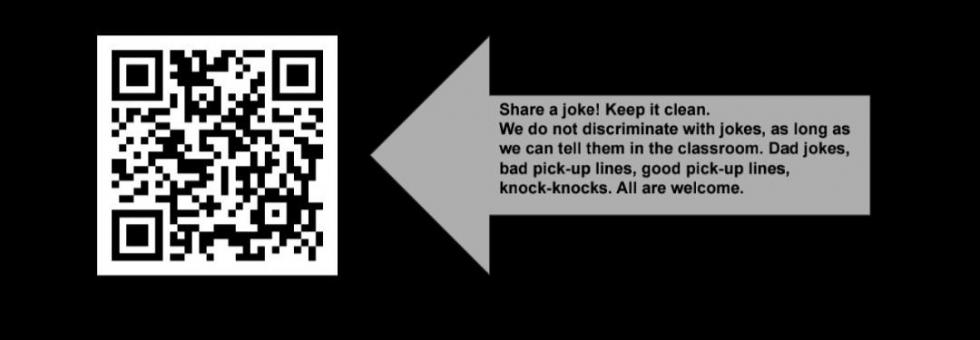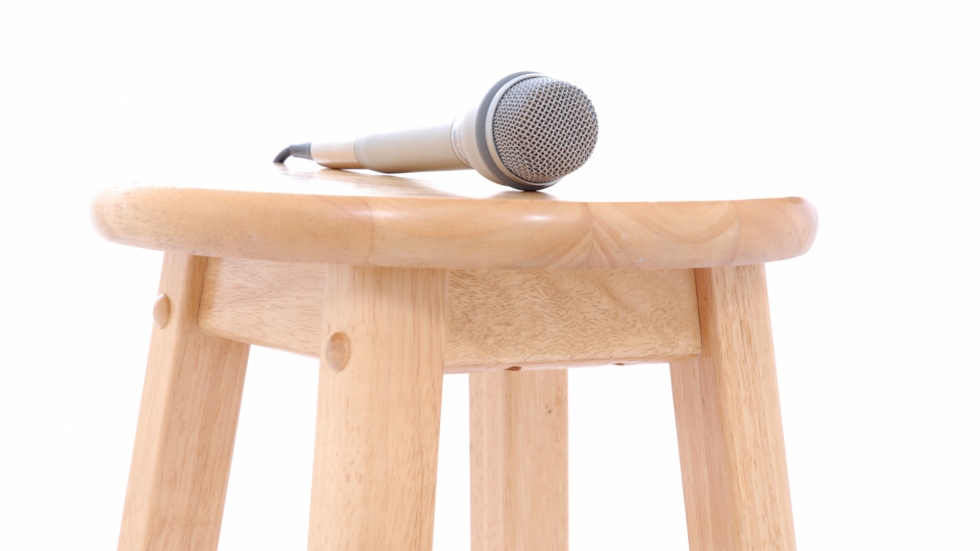Why Did the Teacher Cross the Road? To Get These Tips on Using Humor in the Classroom
Prefer to listen? Check out the audio recording of this post instead.
What do a science teacher and a theater teacher have in common?
One has milked a bat, and the other has milked an audience!
Just kidding. That was a real question, not just the set up for a punchline. So, let’s try it again: What do a science teacher and a theater teacher have in common?
If you attended Benjamin Dasch and Jessamyn Berger’s session “Humorous Teaching Is No Laughing Matter,” then you’d know that in the case of this science/theater teaching duo, they really do have the bat/audience connection, but that they also share parents and a love of humor.
These siblings used their session to demonstrate why humor is such a good teaching method and how you can use it in your classroom no matter what subject you teach.
Why Humor Works
Classrooms can feel tense. What better way to reduce tension than to have a class that laughs?
Additionally, laughter can strengthen social bonds, remove inhibitions and create an environment where people feel safe being silly. It also grabs students’ attention, which means they are more likely to stay engaged and understand the lesson better.
Benjamin and Jessamyn started their presentation by discussing a few reasons that humor can be so helpful in the classroom. Let’s look at just a few of these:
- Increases engagement
- Increases retention when it’s tied to the content
- Improves spatial reasoning ability
- Improves mental health
Of course, if you haven’t prepared your lesson for the day, it can also hide your organizational skills (or lack thereof).
But we are sure that the last one doesn’t really apply to you!
Let’s talk a little bit about different ways you can add humor to your classroom no matter what subject you teach.
Ways to Add Humor to Your Classroom
One way that you can make your classroom funnier, even if you’re not a comedian, is by adding humorous games and activities.
(For most of these, the point was just to play and reduce tension. So, if you try one and students ask what the point is, just tell them, “The point is to PLAY it!”
Share a Joke
During the session, Benjamin and Jessamyn encouraged participants to use a QR code on the screen to share jokes and during the presentation they would introduce the joke and the attendee.
For example, someone submitted this joke: “What did the drummer name his twin daughters? Anna One. Anna Two.”
In your classroom, you could have students share classroom-appropriate jokes like this at the beginning of class, and you could call on students by selecting one of the jokes at random or use them as good tension-breakers throughout class.
Echo Chamber
A good icebreaker game when you are getting students to know each other is “Echo Chamber.” In this game, which should last about five minutes, students stand in a circle and one person introduces themselves while making a funny, but easy and appropriate, motion. Everyone in the circle must then repeat the name and the motion. Then, the person to the right goes, saying their name and a new motion. This goes on until everyone has taken their turn and introduced themselves and their motion.
Open/Shut
This game encourages eye contact and human connections. In it, you ask students to shut their eyes and look down. Then, you count to three. At three, everyone opens their eyes and looks up at someone. If the person the student looks at is looking back at them, they both yell, “Ah!” You can change what they yell.
Here are some of Benjamin and Jessamyn’s recommendations:
- Scream like you saw a ghost.
- Say “no” like you caught your dog eating your dinner.
- Shush them like a librarian would shush someone being loud.
Is There Something in My Teeth
In this game, students stand in a circle. They take turns being student A or student B. Both students hide their teeth behind their lips and perform the following dialogue:
Student A: “Is there something in my teeth?”
Student B: “Your teeth?”
Student A: “My teeth.”
Student B: “No.”
They have to try to get through the whole script without laughing, and if they start to laugh, they start over. They then turn to the person on the other side of them and switch roles to do it again (Student A becomes Student B, etc.)
Category BYE
Pick 10-15 students (or whatever number works best for your class. No matter what, though, volunteers will work better) and have them stand at the front of the room. Pick a theme or have the class suggest one. Here are some ideas:
- Fruit
- Pizza toppings
- Types of cereals
- Pets
Of course, you could also make this a content-tied game by having the theme be something you are studying in class:
- Elements on the periodic table
- Book characters
- World War II battles
- Multiples of 9
Once a theme has been established, point to a student and have them quickly say something that fits the theme. For example, for fruit, they could say bananas, apples, etc.
If they take more than a few seconds to think of something, if what they say doesn’t fit the theme, or if they repeat someone else’s answers, the rest of the class shouts, “BYE,” and the student is eliminated.
Pick a new theme and start over. Keep doing this until you are down to one student. That’s the champion!
Championing Humor in the Classroom
Despite all of its benefits, many teachers are afraid or unwilling to use humor in the classroom. Here are three potential reasons you may find yourself afraid to use humor, and some solutions to each.
If You Are Scared You’ll Lose Authority
Research shows that laughing decreases with age and position – though it increases again once we hit 80, so hang on to your funny bone for now!
So, if you are older than your students…which seems pretty likely…and you have a higher perceived title in the classroom (teacher versus student), it can feel like students will be “more in charge” when humor enters the room.
This can be a scary thought, but as long as you retain control of the classroom, allowing students to take a bigger role in the learning process accomplishes that all so important goal of increasing engagement!
Plus, if it gets too out of hand, that opens up an important teaching moment about knowing the audience and creating boundaries.
If You Are Worried You Aren’t Funny
If you don’t feel like a funny person, then it can feel like adding humor to your classroom is an impossible goal.
Here are some ways to add humor if you aren’t a comedian yourself:
- Make fun of yourself a little.
- If you don’t want to make yourself a target, create a class mascot to “mock.”
- Use funny jokes, quotes, videos or headlines that others have created so that you aren’t in charge of creating the humor.
- Encourage the students to use appropriate classroom humor during study or discussion time.
- Collaborate with a fellow teacher who you find funny.
The best tip here, though, is to follow the five P’s: practice, practice, practice, practice and practice.
If You Think These Ideas Won’t Work for Your Students
Every idea in this article will not work for every classroom. For example, if you have a class with several students on the autism spectrum, they may struggle with the Open/Shut game or might not get much out of the subtle humor you add to your lessons. You may need to try different things to engage some students and to make them feel comfortable.
The ideas presented here are general, but you’ll want to tailor them to fit your audience. What would make them laugh and help them engage with your classroom?
No matter what, though, emphasize positive/harmless humor.
Want more ideas for your classroom? Subscribe to our newsletter to get more Promising Practices like this one from SREB coaches and other educators around the country.
Subscribe to Promising Practices





